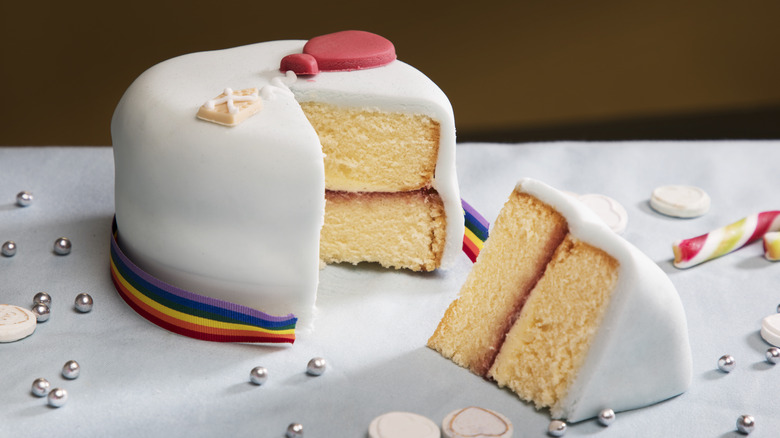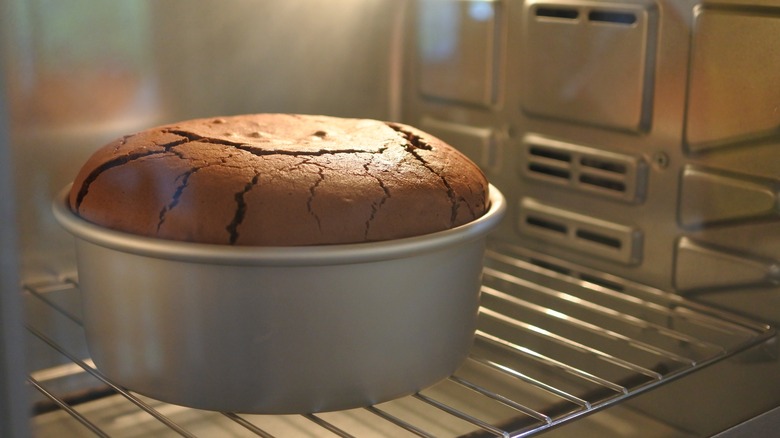The Simple Oven Error That Can Lead To A Sunken Cake
We may receive a commission on purchases made from links.
Sometimes you can do everything right when baking — you follow the order of operations for combining wet and dry ingredients, and even make sure to heed Duff Goldman's easy advice for elevating box cake mix — and still end up with a cake that collapses in the middle. Luckily, we chatted with baking expert and CEO of Dragonfly Cakes, Odette D'Aniello, who explained that much of this comes down to improper oven temperature.
If the oven is not hot enough, "your cake may rise too slowly, then collapse before it sets — leading to that dreaded sunken middle," D'Aniello explains. But be careful: If you overcorrect with an oven that's too hot, she warns, "the outside sets before the inside can rise properly, trapping steam and creating tunnels or dense spots." The only way to get a perfectly risen cake is to make sure your heat remains consistent.
One solution D'Aniello offers to circumvent the inaccuracy of home ovens is to purchase a separate oven thermometer (we like this one from the Efeng Store). With plenty of models available below $10, it's easy to see why D'Aniello states that "a separate oven thermometer is one of the smartest, most affordable tools a home baker can have." Whatever thermometer you decide to buy, just place it in the direct center of the oven to get a precise temperature. "That's the only way to know for sure whether your oven is truly at 350 degrees Fahrenheit — or hovering closer to [325 degrees or even 375 degrees]" says D'Aniello.
Preheat your oven and keep it closed while baking
Odette D'Aniello estimates that residential ovens tend to be off by 10 to 25 degrees Fahrenheit, which can be enough "to affect everything from the rise of your cakes to how evenly they brown." Opening your oven too early or too often can also make the issue worse. The rush of cold air that hits the cake when the oven is opened too early can disrupt a bake that hasn't properly risen. If you must check in on your cake, it's best to use the oven light and only open the door after three-quarters of the baking time has passed — so, for example, if the bake time is 30 minutes, it's best to wait until at least 20 minutes have gone by.
Another solution offered by D'Aniello relates to preheating, which many people skip in an effort to conserve energy. While that might be fine for your next steak and ale casserole or other more forgiving dishes, when it comes to evenly baked cakes, D'Aniello recommends turning on the oven as soon as you start mixing your batter. "That gives the oven time [to] heat up as much as it can and equalize a bit before placing your bake in the oven," she says.


